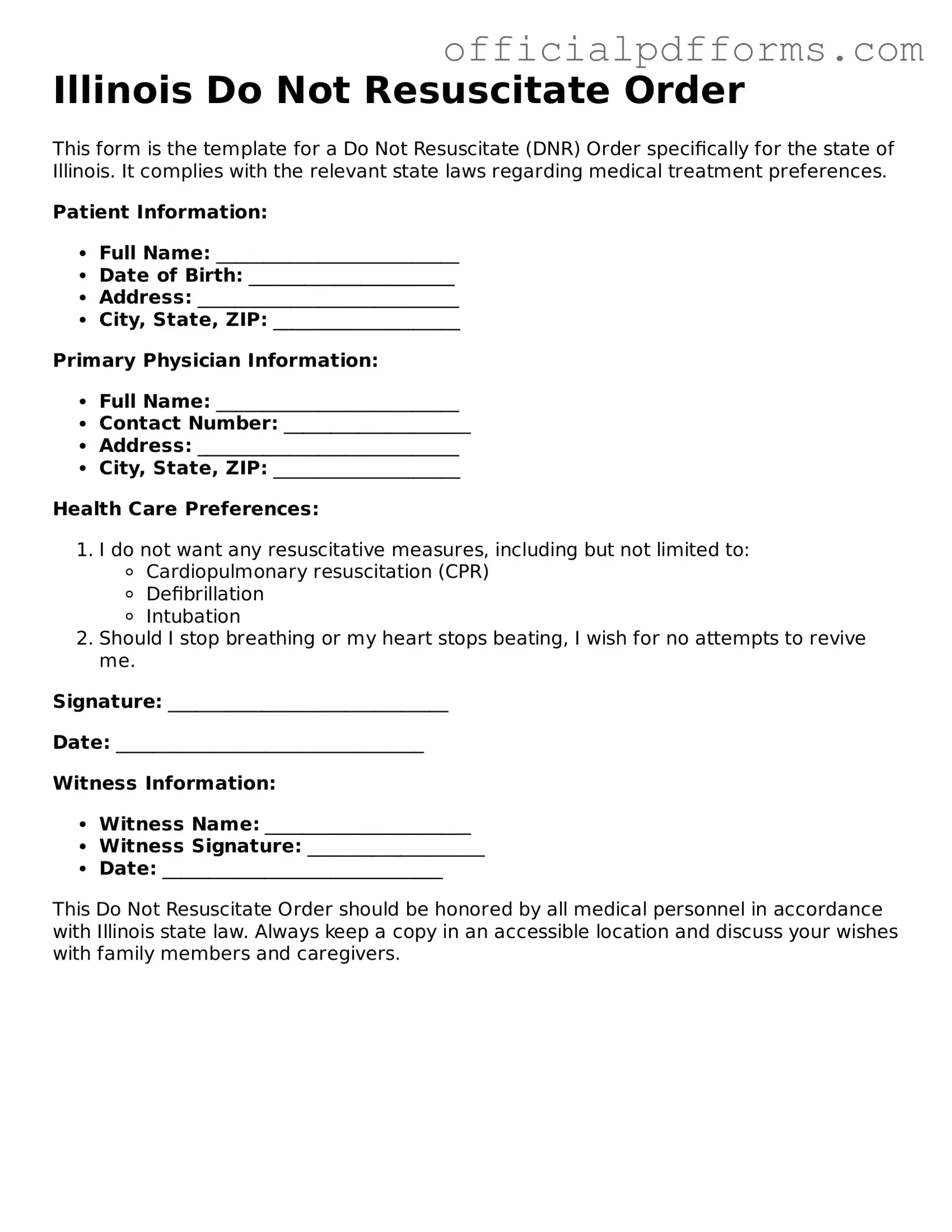Printable Illinois Do Not Resuscitate Order Template
A Do Not Resuscitate (DNR) Order is a legal document that allows individuals to express their wishes regarding resuscitation efforts in the event of a medical emergency. In Illinois, this form ensures that healthcare providers respect a person's decision not to receive life-saving measures if they experience cardiac or respiratory arrest. Understanding and completing this form can provide peace of mind for both individuals and their families.
Ready to take control of your healthcare decisions? Fill out the form by clicking the button below.
Access Form Online
